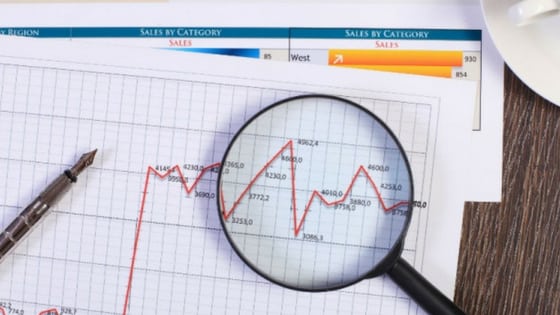
Why High Price Strategy Is Failing Luxury Brands and How to Fix It 💎
Luxury is changing. A high price strategy is no longer just about premium pricing, exclusivity, and status symbols. Today’s consumers—particularly younger generations—are looking for something deeper. They want to connect emotionally with brands, see their values reflected in what they buy, and feel like they’re part of something meaningful.
For businesses, this shift presents both challenges and opportunities. Traditional luxury pricing strategies no longer guarantee success. Instead, brands must rethink what drives people to pay premium prices.
>Download Now: Free PDF A Capability Framework for Pricing Teams
The Shift in Consumer Expectations in High-Priced Luxury Products
Meet Yara, a young entrepreneur in Sydney. A decade ago, she might have saved up to buy a luxury handbag as a symbol of success. But today, she wants more than just a brand name—she wants to invest in something that aligns with her identity. She looks for brands that champion sustainability, craftsmanship, and ethical production. Owning a high-end bag isn’t just about status anymore; it’s about self-expression.
On the other hand, there’s Aaron, a marketing executive in Melbourne. He once believed luxury was all about price and exclusivity. But as he got older, he started valuing experience over ownership. Instead of buying expensive watches just to impress others, he now spends on brands that offer personalised services and unforgettable experiences.
Yara and Aaron’s mindset isn’t unique. Across industries, customers are looking for more than just a label. They want brands to reflect their values and offer something truly meaningful. Businesses that fail to adapt risk losing relevance.
Why High Price Strategy Alone Causes Sales Decline
Many luxury brands make the mistake of clinging to old pricing strategies, assuming that exclusivity and high price tags alone will keep customers loyal. But today’s market has shifted, and those who fail to adapt are seeing steep declines.
Another common pitfall is neglecting personalisation. Luxury consumers expect tailored experiences, not mass-market treatment. When brands fail to make customers feel valued, they lose relevance—and revenue.
Some brands also resist change, ignoring trends like resale, sustainability, and digital engagement. But luxury buyers are tech-savvy and environmentally conscious. A brand that refuses to evolve can quickly feel outdated, pushing customers toward competitors who do embrace these shifts.
In short, brands that fail to connect emotionally, resist change, or send mixed messages are at risk of decline. The good news? Those that adapt can thrive.
The Power of Emotion in Luxury Brand Pricing and Marketing Strategy
Pricing has never been just about numbers—it’s about perception. A customer’s emotional connection to a brand can make all the difference in whether they’re willing to pay a premium.
Think about luxury hotel brands. Some thrive because they don’t just sell a night’s stay; they sell an experience, a feeling of exclusivity, and personalised attention. Guests remember how they felt—the warm greeting, the attention to detail, the sense of belonging. This emotional pull justifies the premium price.
It’s the same with fashion brands. A luxury dress isn’t just about fabric and stitching. It’s about how it makes the wearer feel—confident, powerful, and sophisticated. That’s why luxury pricing must be built on emotion, not just cost.
Businesses that understand this can position themselves at the high end of the market without relying solely on price.
The Resale Economy and Its Impact on Luxury Brand Pricing
Not long ago, luxury brands ignored—or even discouraged—resale markets. But that’s changed. Second-hand luxury is booming, with platforms like The RealReal and Vestiaire Collective making it easier than ever to buy pre-owned designer goods.
This shift creates both risks and opportunities for businesses.
For example, luxury watch brands once relied on scarcity to maintain their value. Now, the second-hand market is so strong that some pre-owned watches sell for even more than retail prices. This challenges traditional pricing models—if a customer can get a nearly new Rolex for less, why would they pay full price?
Instead of resisting resale, smart brands are embracing it. Some have started their own certified pre-owned programs, ensuring that second-hand buyers still engage with the brand while protecting its value. Businesses that adapt can turn resale into an advantage rather than a threat.
Rethinking High Price Strategy for the New Luxury Market
So, what does all this mean for businesses? If traditional luxury pricing doesn’t work like it used to, how should brands approach pricing today? Here are four strategies:
Focus on Authenticity – Today’s customers can spot insincerity from a mile away. Share your brand’s real story. Why do you exist? What do you stand for? If your pricing reflects your values, customers will buy into more than just your products.
Offer Personalised Experiences – People are willing to pay more when they feel special. Whether it’s customisation, VIP access, or concierge services, businesses that make customers feel valued can command higher prices.
Embrace Sustainability and Resale – Luxury buyers care about the environment. Brands that integrate sustainability into their pricing—whether through eco-friendly materials, limited runs, or resale partnerships—will appeal to conscious consumers.
Sell the Feeling, Not Just the Product – The most successful luxury brands don’t sell things—they sell how those things make people feel. Every element, from branding to pricing, should support this emotional connection.
〉〉〉 Get Your FREE Pricing Audit 〉〉〉
Luxury High Price Strategy Needs to Evolve
The luxury landscape is shifting, and businesses must keep up or get left behind. If your pricing strategy still relies on old-school high price strategy and exclusivity, it’s time to rethink your approach. Focus on emotional value, authenticity, and the evolving role of resale—and you’ll not only maintain your premium status but build a brand that thrives in the future of luxury.
Now is the perfect time to assess how your business positions value. Are you building strong emotional connections? Are you adapting to new consumer expectations? If you’re unsure where to start, let’s chat. We help businesses like yours create pricing strategies that drive loyalty and long-term success. Reach out today, and let’s explore how you can stay ahead in the evolving luxury market.
For a comprehensive view of building a great pricing team to prevent loss in revenue, Download a complimentary whitepaper on A Capability Framework for Pricing Teams.
Are you a business in need of help aligning your pricing strategy, people and operations to deliver an immediate impact on profit?
If so, please call (+61) 2 9000 1115.
You can also email us at team@taylorwells.com.au if you have any further questions.
Make your pricing world-class!
Related Posts
Leave a Reply Cancel reply
Categories
- marketing strategy (26)
- Organisational Design (14)
- Podcast (114)
- Pricing Capability (87)
- Pricing Career Advice (10)
- Pricing Recruitment (19)
- Pricing Strategy (292)
- Pricing Team Skills (13)
- Pricing Teams & Culture (25)
- Pricing Transformation (48)
- Revenue Model (25)
- Sales Effectiveness (27)
- Talent Management (7)
- Technical Pricing Skills (35)






